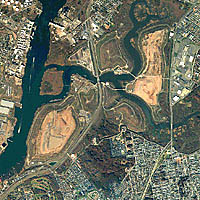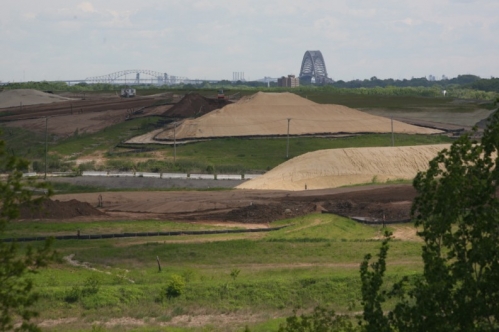It’s Jam Band Friday – http://www.youtube.com/watch?v=GCPSh47gHz8&feature=related
While I have understood for like 40 years that “scarcity” was the real environmental issue and that “over population” was its cause, many people are just waking up to that. On the energy front, an example would be that for the last 100 years we should have been rationing oil and using it for only the things that it was absolutely necessary for. Guess what? Gasoline and Plastics are two that would not be remotely near the top of the absolutely necessary list. Plastic bags would be ludicrous. Similarly, food should have been planted everywhere. I mean everywhere, yards, parks, ditches. Over the last 100 years good land should have been totally devoted to food and bad land left alone. We did not do that. In fact we did the exact opposite. If 100 years ago every couple could have produced no more that 2 kids….THINK about what our world would be like…Anyway the peak oil people and a lot of environmentalists are suddenly realizing that Thomas Robert Malthus was right:
http://en.wikipedia.org/wiki/Thomas_Malthus
We (homosapien) have suffered die backs before. People like to ignore the fact that Malthus had already been RIGHT when he wrote his first pamphlet. Populations of Humans, and our close cousins Neanderthal, Erectis and Hablis have fluctuated radically in the last several million years. This to the extent that the cousins are extinct. No one has ever considered that we just got lucky on that one or even worse yet that we only made it because we could hang on. That is, when our numbers get small we cooperate and stave off the end by any means necessary. These episodes are called “bottle necks” in the populations sciences and they are frightening to contemplate. Just as an example sometime roughly 50,000 years ago there may have been as few as 5,000 humans on this planet in an area the size of New York State in eastern South Africa. Humbling isn’t it? Why did we go from a population of several hundred thousand spread all over the Mediteranian and the Middle east…maybe even extending to the west coast of India…BACK to our home in Africa? Was it war, volcanic eruptions, changes in climate, famine or even disease? Who knows but this planet can not sustain 9 billion people. It just can’t. So maybe the reason I have taken up with the agricultural types is that old marijuana saying, Food will get you through times of no money better than money will get you through times of no food.
:}
http://www.youtube.com/watch?v=buXJlBd3Mf8&feature=related
So here are a couple of food ideas from the people at Peak Oil:
http://timestranscript.canadaeast.com/news/article/710876
Urban farms the wave of future?
Published Friday June 26th, 2009
Permit granted for experimental farm in Moncton neighbourhood
A5
It’s always risky to count your chickens before they’re hatched, but it looks like a go for a plan to raise egg-producing hens in a suburban Moncton neighbourhood.
The Greater Moncton District Planning Commission has granted a local group a one-year temporary permit to run an urban experimental farm. The project, sponsored by Post Carbon Greater Moncton, will involve the keeping of up to four hens within the city boundaries. The group hatched the plan as a response to concerns that rising oil prices will one day force people to return to being more involved in their food production.
Is having your own hens laying eggs all it’s cracked up to be? Will the quiet hamlet (or is that omelette?) of Sunny Acres West (or is that Sunny Side Up Acres?) ever be the same? What’s the best way to run a hen-house without running off half-cocked?
That’s what the folks of the local post carbon group hope to find out through a careful study. This is not simply a “let the chicks fall where they may” approach to the issue of farm animals and humans co-existing in an urban setting, but rather something that will be carefully monitored.
And bad puns aside — the “eggspectations” of the headline is Post Carbon spokesman Michel Desjardins’ own contribution to this article, lest anyone think we’re making fun — the purpose is serious. Desjardins said yesterday the pilot project is a step towards more self-sufficiency and food security in the region. “We think food security and self-sufficiency will be a huge issue in the future.”
:}
http://www.youtube.com/watch?v=P0aXY2pM2sA&feature=related
Then there is this:
http://www.eurekalert.org/pub_releases/2009-06/uow-pfe062509.php
Contact: David Zaks
zaks@wisc.edu
608-890-0337
University of Wisconsin-Madison
Projected food, energy demands seen to outpace production
MADISON — With the caloric needs of the planet expected to soar by 50 percent in the next 40 years, planning and investment in global agriculture will become critically important, according a new report released today (June 25).
The report, produced by Deutsche Bank, one of the world’s leading global investment banks, in collaboration with the University of Wisconsin-Madison’s Nelson Institute for Environmental Studies, provides a framework for investing in sustainable agriculture against a backdrop of massive population growth and escalating demands for food, fiber and fuel.
“We are at a crossroads in terms of our investments in agriculture and what we will need to do to feed the world population by 2050,” says David Zaks, a co-author of the report and a researcher at the Nelson Institute’s Center for Sustainability and the Global Environment.
By 2050, world population is expected to exceed 9 billion people, up from 6.5 billion today. Already, according to the report, a gap is emerging between agricultural production and demand, and the disconnect is expected to be amplified by climate change, increasing demand for biofuels, and a growing scarcity of water.
“There will come a point in time when we will have difficulties feeding world population,” says Zaks, a graduate student whose research focuses on the patterns, trends and processes of global agriculture.
Although unchecked population growth will put severe strains on global agriculture, demand can be met by a combination of expanding agriculture to now marginal or unused land, substituting new types of crops, and technology, the report’s authors conclude. “The solution is only going to come about by changing the way we use land, changing the things that we grow and changing the way that we grow them,” Zaks explains.
The report notes that agricultural research and technological development in the United States and Europe have increased notably in the last decade, but those advances have not translated into increased production on a global scale. Subsistence farmers in developing nations, in particular, have benefited little from such developments and investments in those agricultural sectors have been marginal, at best.
:}
Me I am headed for the refrigerator:
http://www.youtube.com/watch?v=YxEjENrSdV0&feature=related
:}

 The creation and implementation of the Department of Homeland Security has intensified the quest to make the nation’s food supply more secure.
The creation and implementation of the Department of Homeland Security has intensified the quest to make the nation’s food supply more secure. 










